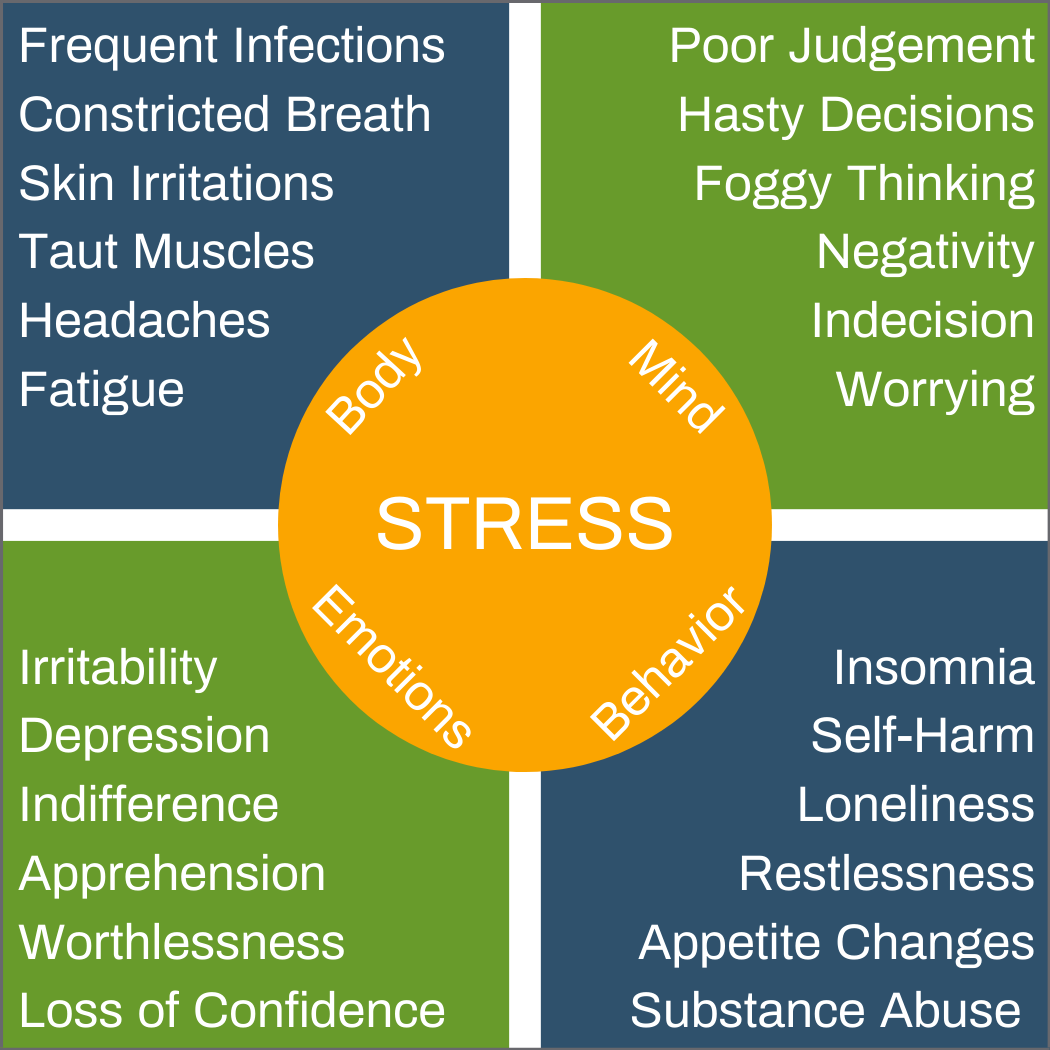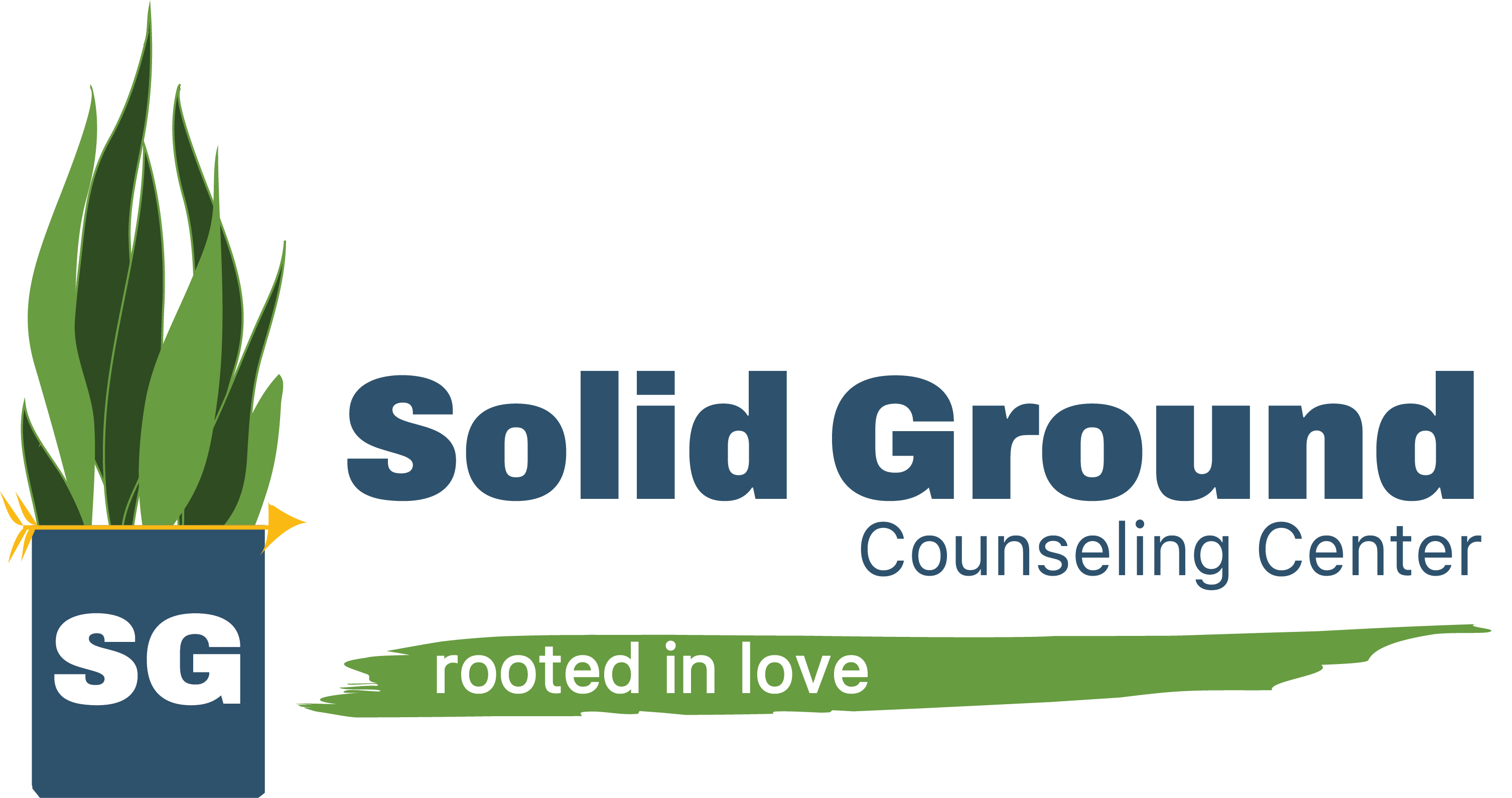The definition of stress is “a state of mental or emotional strain or tension resulting from adverse or very demanding circumstances.”
Stress is the body’s natural response to situations that require us to exert effort to get through it. In other words, our body system recognizes the task at hand as something requiring us to give more and it reacts appropriately. The type of stress that depletes us and causes the reaction you likely think of when you consider stress is called distress. Some examples are pushing through an afternoon after an already long day. Or perhaps we have family visiting and their presence stresses us emotionally. Additionally, life events such as a job change, new baby, and moving can all cause stress – albeit “good” stress, also known as eustress.
Understanding the role of stress as a normal part of life can help us to categorize the stress we are feeling and learn better ways to be aware of and manage it.
Stress really does have a beautiful purpose in our body. It signals to us that a situation requires more of us than our baseline. This gives us the opportunity to employ the necessary resources to get the task accomplished.
When we face distressing situations and can successfully utilize the proper resources for the task, we build resilience. This helps us reinforce the belief in our ability to problem solve, which helps decrease how stressful similar situations will feel in the future. Cool yeah?
When we face eustress situations and can do the same thing, guess what, more resilience! AND in these situations where the outcome was positive from the beginning (even if the journey was stressful) we reinforce that not all hard work is a bad thing.
Over time, this helps turn our outlook more positive because we can see that problems have solutions, and resources assist our ability to problem solve. Our bodies are so amazing, right?!
So – we know what stress is, and that it serves a purpose, but how do we actually recognize it in ourselves? If we do not want stress to completely overtake us, we need to be mindful (self-aware) of how stress is impacting us so we can work to relieve stress in helpful, effective ways.
One way we can do that is a body scan. This is a process of pausing to take an inventory of where we can feel tension, ache, and the weight of stress on our physical selves. During this process we may also notice our thoughts are racing. Stress can cause an enormous amount of mental activity. While this is typical of stress, it can cause long-term issues if not dealt with. We can also use the processes of journaling, or meditation to understand how stress is affecting us. Using either of these we are working to re-center ourselves by taking inventory of what we notice in our thoughts and our bodies.
Therapy is also an amazingly effective tool we can use to recognize stress in ourselves. Therapists can provide a third-party perspective on what we are explaining and help us label pain, challenges, and obstacles as the result, or cause, of stress. Once we can see this better on our own, we become more proficient at dealing with stress.
Did you notice all these tools for recognizing stress (and therefore managing it) require an active effort? Stress management is NOT a passive process. To effectively recognize and manage stress we need to be willing to look at what is happening to cause it, and be willing to make necessary changes to the stress-causing things in our lives.
Today we challenge you to take 5 minutes and complete a body scan to figure out where you notice stress in your body – and see if you can identify the cause.
Let’s wrap up our conversation with a reminder that stress is a natural part of life. We feel stress so we can understand how our circumstances are impacting us. We can use mindfulness to be able to raise our awareness of what that actually looks like on our bodies. Included here is a graphic we love that shows how stress can impact different body systems – can you relate with any of these?

